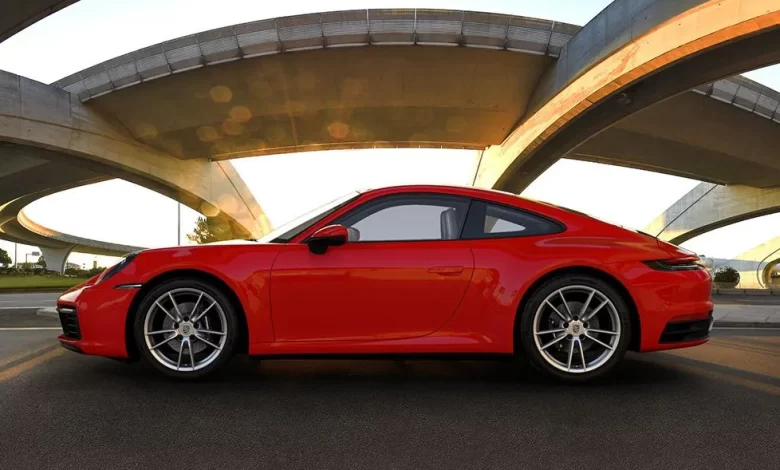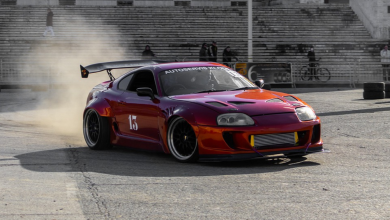Porsche 911 – Driving the new Carrera S

What we’re about to rant about now is the all-new generation Porsche 911. In its 992 avatar, it is the 8th iteration of the world’s most celebrated rear-engined sportscar. When Porsche produces two generations one after the other, there tend to be some similarities, particularly shared with the 991 911. However, there are evident changes that differentiate the two from each other. The body panels are made out of aluminium but despite the lightweight materials, the 911 has gained some heft. It has also grown wider, longer with an increase in height as well. Even the wheels are bigger; the tracks wider. Is it really an all-new 911? We find out.
Same old bottle
We doubt we’re ever going to see a ‘transformed’ Porsche 911. The silhouette has remained the same for decades; it’s just the size, technology and the modernisation of the body panels that keep giving the Porsche 911 a new look. The engine too, has been positioned behind the rear axle, like always, so we don’t expect too much on this front. The bug shaped roof line is bound to carry on for many more generations. But this time around, there is a pretty prominent change to the front bumper and the rear tail lamps. It’s a nice, slender LED light bar that runs the width of the back and looks absolutely stunning when lit up.
The rest of the rear has a three-dimensional appeal to it with multiple layers sticking out, and that includes the ‘Porsche’ badging too. It also features a gloss-black engine grille, a high-set brake light and a two-stage retractable spoiler that sits flush with the rear when isn’t needed. There’s a rear valance on the lower half and the huge oval exhaust tips give out a nice, sporty note. However, we found that the matte-black plastic that surrounds them is no great detail. Even the front bumper is simpler, with air intakes that get opening louvres when cool air is needed to pass through.
There’s no denying the fact that Porsche Cars have enhanced its dimensions. Like the new all-wheel-drive models, the rear-wheel-drive-only cars are just as wide and it really does show. The front and rear fenders bulge out more than ever, while the wheels have gotten bigger (20-inchers up-front and 21-inchers at the back). The Porsche 911 looks more planted than ever, and for what is the base 911, this car offers a lot.
New wine
The most apparent of changes lies inside the cabin of the 911. The door handle sits beautifully flush with the bodywork and will pop out the moment you unlock the 911. To be honest, Porsche Cars have gone a bit overboard with the functioning of the door handle and we think it was unnecessary. Everything – from the quality of materials to the feel of plastics – it all feels expensive, and that includes the door pads and the dashboard. That solid German feel remains in every button and switch.
We like how the dashboard harks back to the older 911s, featuring the infotainment and instrumentation of course. The 10.9-inch touchscreen looks great, while a nice, analogue tachometer is placed behind the steering; Porsche enthusiasts can rejoice. But you have circular screens on either side, like most 911s of today. The buttons on the central console are used for basic purposes and the gear selector is nice and stubby. You can manually shift gears via the paddles and the new 911 has retained that pop-out cup holder from the dashboard. It even has usable door pockets, but the seats at the back are best occupied by children.
Unmistakably 911
We love the driving position because one sits nice and low. Visibility from the driver’s seat is great, even for someone who is short. There’s that typical view you get, with two headlights swelling over the front fenders, giving you a sense of precision. The steering isn’t big; it’s just perfect. All the driving modes have been shifted from the central console to the touchscreen, including the sport exhaust option and the retractable spoiler. What comes as a part of the Sport Chrono Package is the mode selector dial. You don’t get any starter button; what you do get though is a switch that turns like a key.
The engine sounds loud when fired up and you can thank the 3.0-litre flat-six for that. Being turbocharged, it doesn’t sounds like old naturally-aspirated flat-sixes, but the sound has been piped through the car’s audio system. However, it doesn’t feel a turbocharged sportscar; it gets off the mark in no time and there’s no delay in power delivery. The engine makes 443bhp and 530Nm of torque, all of which is sent to the rear wheels through a new 8-speed PDK automatic transmission. The gearbox is quick in terms of response and you reach the redline in no time. Get the information car features & specification, reviews and latest news.






